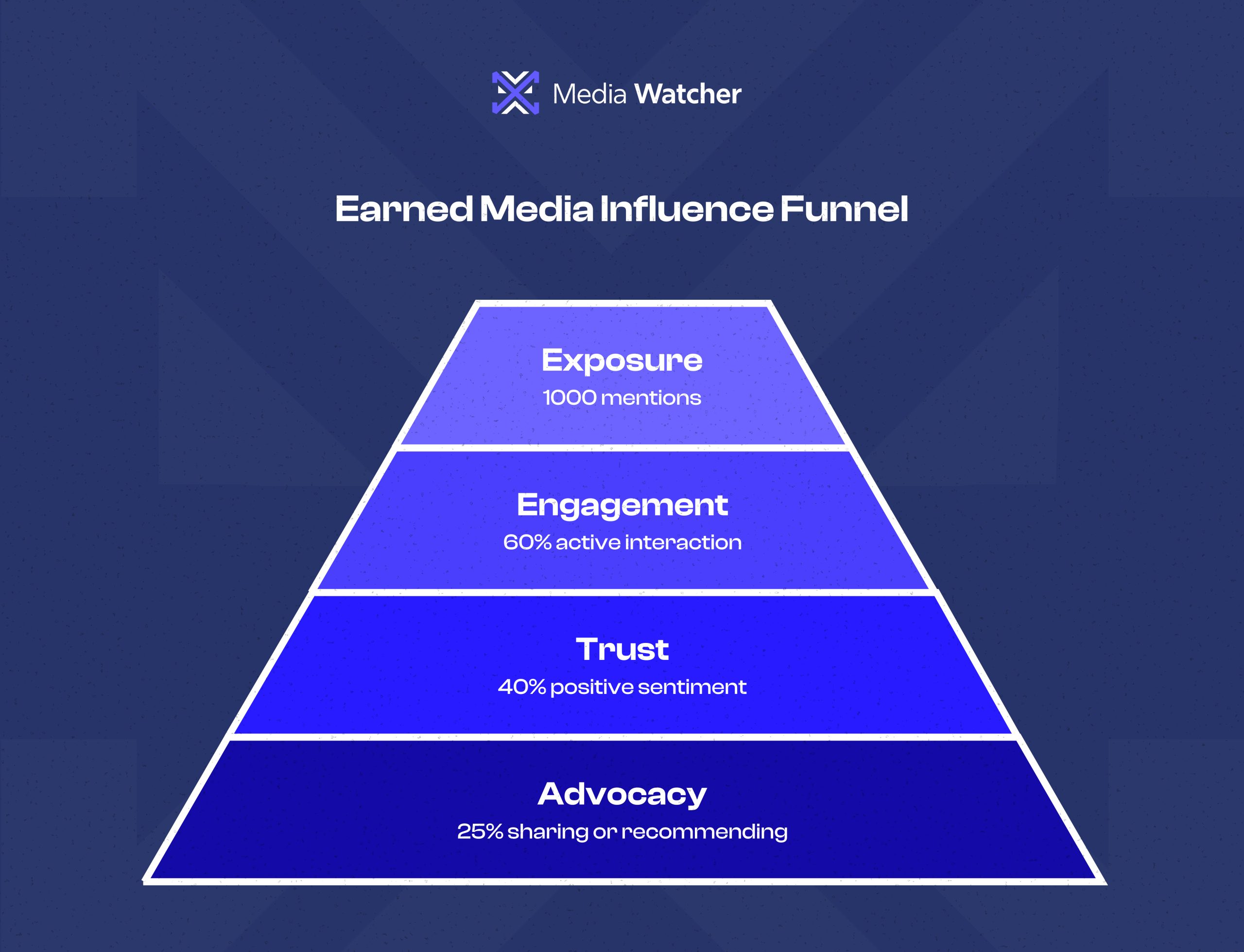Have you ever wondered how certain brands can get attention without having to spend millions on advertisements?
The power of earned media is often behind that quiet buzz, the unexpected praise, and even unplanned mentions. It makes familiar conversations, customer feedback, and external acknowledgments into a substantial momentum for a brand. Research shows that brands that have good organic visibility have up to three times the trust rating as those that only use paid campaigns.
As social discourse follows brand messaging, the narrative gets more powerful, and it enables companies to speak with reality as opposed to pretense. It is precisely at this point that earned media plays a strategic role.
What is Earned Media?
As per the earned media definition, it refers to publicity earned through working, not money. It records the mentions, shares, reviews, articles, reposts, and conversations that occur naturally. These touch-points manifest as the customers, journalists, influencers, or communities decide to discuss a brand out of interest, value, or experience.
It is the awareness that a brand will have without a purchase placement. It mirrors real reactions and the mood of the people. In lieu of controlled messaging, brands monitor audience responses, reactions, and how they rebrand the conversation. This renders earned media not only exposure but also a reflection of authenticity.
In real life, communication teams utilize tone, coverage, and context in order to gauge the progression of discussions amongst the population. These lessons form better storytelling and assist brands to shift from one-directional message to two-way communication.
Real World Example of How Earned Media Works
We can take the earned media example of the technology industry, whereby customer perception may change overnight. An organization introducing a new smartphone might feature a single official release. But tech bloggers, reviewers, and internet communities start uploading unboxing videos, feature breakdowns, and performance testing. The news portals follow the trend, social channels are buzzing with reactions, and influencers are providing opinions.
This domino effect creates examples of earned media that demonstrate how organic interaction makes a product far greater than the message. It becomes a network of third-party voices that construct the narrative in real time.
These are moments when brands learn about sentiment, competitive positioning, and expectations. When the discussion becomes positive, the brand gains more visibility without incurring high expenses on paid promotions. Even if tone changes negatively over time, the media monitoring insights provide the teams with the ability to change the communication approach prior to the formation of the perception.
Major Types of Earned Media
It is important to comprehend the types of earned media for understanding the impact that different channels have on reputation. Here are some major forms of earned media given below:
1. Customer Reviews and Testimonials
Consumer reviews and testimonials involve product reviews on online commerce sites, reviews on Google, or comments posted on social media. They are massive since viewers rely on the opinions of their peers rather than advertisements.
2. News Articles and Press News
The paid coverage by journalists adds to the valuable visibility of a story, trend, or announcement. Such references usually define the credibility of a brand.
3. Social Media Distribution and Discussions
This encompasses reposts, hashtags, user-created content, and online discussions. These types of interactions are relevant due to the direct community interest.
4. Influencer Reactions
The exposure is authentic when influencers post an opinion or feature a product on a voluntary basis. Such moments can result in more widespread involvement and viral traction.
5. Rankings and Expert Recommendations within Industry
Awards, listings, or expert recommendations also turn into useful touchpoints. These are indicators of authority and emphasize brand performance among the competitors.
All forms of earned media have varied contributions to public perception, visibility, and reputation in the long term. Collectively, they display the overall voice of the audience.

Elements of an Effective Earned Media Model
A strong earned media strategy relies on understanding the core elements that influence organic visibility. Any effective model or monitoring template must evaluate more than just the number of mentions. It should translate public reactions into meaningful intelligence that supports brand decisions.
The foundation of a good model starts with sentiment evaluation. Knowing whether conversations lean positive, neutral, or negative helps teams understand the emotional layer behind the mentions. It should also include reach measurements to show how far discussions travel and how deeply they resonate.
Credibility of sources is another vital component. Mentions from respected journalists or industry experts hold more influence than unverified platforms. A template should classify mentions by authority, geography, and media type to present a clear map of visibility.
Visuals such as charts and heat maps help teams interpret information at a glance. Finally, the model should include competitive comparison and insights into share of voice to support benchmarking and strategic decision-making.
Steps to Build a Strong Earned Media Framework
Brands require an organized strategy in order to use earned media monitoring. A step-by-step approach can assist in transforming the disjointed public discussions into actionable information.
1. Set Precise Goals
Discover whether it is reputation improvement, campaign visibility, product reactions, or competitive tracking. The report with clear objectives helps in determining its direction.
2. Gather General Media Statistics
Sources of mentions include digital news media, traditional media, blogs, forums, and major social sites. Varied sources provide a true representation of the societal discourse.
3. Categorize Mentions by Relevance
Use filters to exclude irrelevant conversations in order to focus the analysis. Arrange the remaining mentions by themes, regions, and media categories to be better organized.
4. Analyze Sentiment and Context
Discuss the tone and meaning behind each reference. Context is important since not everything should be exposed; the nuance comes in handy with accurate interpretation.
5. Assess Metrics that Matter
Measure engagement, reach, frequency, and share of voice. Monitor trends in track visibility to identify opportunities or threats.
6. Comparison with Competitors
Benchmarking identifies gaps and strengths. It also assists in understanding whether the augmented attention is a brand-specific factor or a more general tendency in the industry.
7. Turn Findings into Recommendations
Each report ought to conclude with practical results. Recommendations inform practical decisions, whether it is to adjust messaging, enhance customer experience, or amplify community engagement.
A properly developed structure facilitates transparency and ensures that insights of earned media can be converted into communication value.
How to Measure Earned Media?
The measurement of earned media assists the brands in knowing how their messages are perceived and how they affect audiences. In order to obtain a comprehensive overview, one should trace references through social media, news outlets, blogs, and forums because each channel represents a different type of interaction with the audience.
Reach measures how far these messages will travel, whereas engagement measures audience interaction and overall responses. Sentiment analysis, simultaneously, introduces one more dimension, demonstrating whether the discussions are positive, neutral, or negative, which contributes to understanding audience perception.
The reliability of sources is another important factor since the reference to reputable voices is stronger and may be more effective in forming opinions. The share of voice comparison with the competitors also helps to better understand the presence of a brand in the market and provide the relative visibility and influence.
The comparison of trends over time is helpful to understand the influence of campaigns on perception and the behavior of the audience. These insights altogether demonstrate not only a sense of visibility but also a sense of trust, impact, and the actual engagement of audiences with a brand.

Why Earned Media Holds Real Value for Brand Growth?
Effective knowledge of the earned media provides the brands with insight into the natural development of messages.
According to research, organizations that proactively measure earned media value have a higher brand loyalty and react to reputational changes nearly 40 times quicker than those that do not. Such responsiveness is beneficial in terms of trust building, narratives, and competitive advantage.
Earned media tracking also shows the way customers perceive brand actions. It points to growth opportunities, reveals the first indications of societal interests, and discloses the platforms that may have the most significant influence on the minds of people. When brands need authenticity, earned media provides a direct route into the heads of the audience.
These insights can be applied to both communications teams initiating a campaign and those with an ongoing reputation and audience to ensure their messages fit the actual expectations.
How Media Watcher Assists with Earned Media Evaluation?
Media Watcher enhances your earned media intelligence by refining unstructured conversations into valuable intelligence. It documents brand references on online sites, print sources, and television channels, providing you with a comprehensive outlook of social debates. Sentiment analysis brings out the tone and emotional orientation in various languages, and makes you see how your brand is being discussed, not just where it is mentioned.
Share-of-voice indicators show whether your brand is setting the conversation or reacting to it, while competitive insights reveal strengths, blind spots, and openings in the market. Media Watcher’s visual dashboards bring everything together in simple charts and summaries that communication teams can review at a glance.
These features make it easier to guide your messaging, respond with confidence, and stay aligned with audience expectations.
Contact the Media Watcher team to book a demo today.




